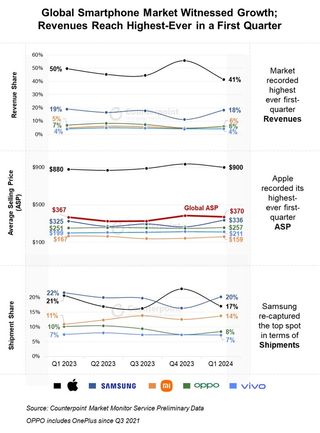Huawei devices are losing support for Android apps – here’s why it’s a good thing
What do you want to know? Huawei will move away from the Android Open Source project for HarmonyOS Next. The next version of the company’s mobile operating system will be built on its own custom architecture. This move will remove support for Google apps, but it will improve the performance and efficiency of Huawei devices. […]

What do you want to know?
- Huawei will move away from the Android Open Source project for HarmonyOS Next.
- The next version of the company’s mobile operating system will be built on its own custom architecture.
- This move will remove support for Google apps, but it will improve the performance and efficiency of Huawei devices.
Huawei will completely move away from Android apps on its devices with the next version of HarmonyOS, called HarmonyOS Next. The new version of Huawei’s internal operating system was previewed this week at HDC 2024, the company’s developers conference. As reported GizmoChinaHarmonyOS Next will leave behind the Android Open Source Project and will instead be built on Huawei’s custom architecture.
The decision has significant consequences. After losing support for Google apps a few years ago due to economic sanctions, Huawei devices will now completely lose support for Android apps. A big advantage of using the Android Open Source Project is compatibility with Android apps. Developers can modify AOSP as they see fit, while still benefiting from the extensive list of apps built on the AOSP architecture.
As extreme examples, Humane AI Pin and Rabbit R1 are both built on the AOSP architecture. These are not Android devices in the conventional sense, but they use the AOSP code base. This means that they are technically compatible with Android applications. This is how DIYers were able to hack the Rabbit R1 and sideload Android launchers and apps onto the device without translation, emulation, or other extreme efforts required.
Since HarmonyOS is built on AOSP, it can download and install Android apps. This will change when HarmonyOS Next is released with Huawei’s custom architecture. Developers will need to be ported to the Hongmeng kernel and system, according to GizmoChina. This process has been underway since 2023, but it is unclear how many apps are currently available on HarmonyOS Next. The company says popular apps Taobao, Yiche and Bilibili all run natively on the platform.
This move could work in China because many apps are grouped together and offer many functions in one place. For example, WeChat is the world’s largest standalone mobile application and serves as a messaging service, social media platform, and mobile payments provider. It’s basically WhatsApp, Facebook/Instagram and PayPal all rolled into one – if you compare WeChat to its Western equivalents. So if Huawei had a handful of core apps on HarmonyOS Next, it could be successful even without Android app support.
Due to sanctions imposed by the United States and other governments, Huawei phones have not been a viable consideration for most people outside of China for years. This becomes even more true now that Android apps will be completely left behind when HarmonyOS Next launches.
However, it’s not ready yet. Huawei says HarmonyOS Next is currently in beta testing and is looking for around 3,000 developers and beta testers. The development process for HarmonyOS Next has been slow and steady, and that’s not surprising. This will be a big Huawei and comes with a lot of risk.
Huawei must get the most possible performance out of its devices
Considering the broader circumstances facing Huawei, the decision to build HarmonyOS on its own architecture on the Android Open Source Project actually makes a lot of sense. The aforementioned sanctions have limited Huawei’s ability to procure the equipment needed to create cutting-edge processors. Semiconductor Manufacturing International Corporation (SMIC), which designs and manufactures Huawei chips, cannot import equipment due to U.S. sanctions and treaties with other countries.
What’s called an extreme ultraviolet (EUV) lithography machine allows chipmakers to produce faster, higher-quality chips than with older deep ultraviolet (DUV) lithography equipment. This is why Huawei’s latest smartphone chip was manufactured using the 7nm process, while Taiwan Semiconductor Manufacturing Company (TSMC) has already developed mobile chips using the 3nm process.
SMIC may reportedly be able to manufacture 5nm chips using its existing DUV equipment, although this would be expensive and inefficient. Regardless, Huawei’s chips would still lag behind the competition.
Switching to a custom HarmonyOS Next version built on its own architecture could increase efficiency and make the most of its meager microprocessors. In fact, that’s exactly what Huawei is hoping for. The company claims that HarmonyOS Next will bring 30% faster overall performance and 20% lower power consumption. Abandoning AOSP could therefore be a good thing. If Huawei can deliver top-notch performance using HarmonyOS Next and integrate essential developers, Huawei users in China may not miss Android apps.
Still, the move highlights the difficulties Huawei has faced since being heavily sanctioned by the U.S. government and others. If the company had access to cutting-edge equipment, international sales, and Google apps, it might not need to move away from the Android Open Source project. However, when considering Huawei’s options, choosing competitive overall performance and battery life over extensive app support may be the right decision.













